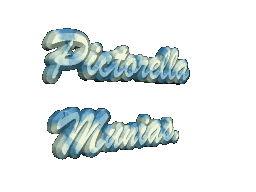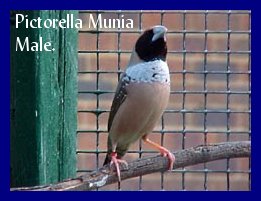David Pace's Pictorella Manual. Foreword. David Pace has been a classroom teacher and co-ordinator of Environmental Education at Torquay Primary School since moving from Melbourne to Anglesea on Victoria�s Surf Coast in 1997. David has coordinated many environmental projects at Torquay Primary such as the Animals in the Classroom program, Inter-school Conservation Camps, developed a school wetlands, Koori Garden and a school indigenous nursery. David was a member of the National Exotic Bird Committee that advised the Federal Minister for the Environment on matters pertaining to the registration of Exotic species in Australian aviaries. David has been a dedicated aviculturalist for over 30 years keeping and breeding a wide variety of species. Australian finches, however, have always been a favourite. David has specialised with several species but has been particularly focused on diamond firetails, pictorellas and painted buttonquail. David is a firm believer in sharing experiences. He believes that we are always learning and so need to help each other by sharing our successes and failures. David has spoken at several regional and state avicultural gatherings and has produced in excess of 40 avicultural articles that have been published both nationally and internationally. David is currently the editor of the �The Journal�, the magazine for the Avicultural Society of Australia, Geelong Branch and is also Vice-president. David is also keen to share his experiences in environmental education through the writing of numerous articles, delivery of teacher professional development and by presentations at regional, state and national conferences. David's work in environmental education has been recognised formally when he received the VAEE Environmental Educator of the Year and the BHP Science Teacher of the Year awards. I'm very happy to be allowed to publish this journal on behalf of David for the benifit of all who keep this finch. |
 |
| Introduction With the cessation of legal trapping of wild birds in the mid-eighties, aviculture has succeeded, in the majority of cases, to preserve its stock through captive breeding. The challenge for the future is to continue to maintain viable numbers of each species, particularly those that are either held in low numbers or whose wild population are threatened. The Pictorella Mannikin Heteromunia pectoralis, falls into both of these categories. In captivity, the Pictorella Mannikin has been kept for more than a century, first arriving in Europe between 1870 and 1880. Immelmann records that it was less frequently offered than the Yellow-rumped and Chestnut-breasted finches (Immelmann '65). In 1987, 850 Pictorellas were held in South Australian aviaries, of which 413 birds remained by 1991. (Shephard et al. '91). As recently as 1995, this species was still held in low numbers, with only 202 birds held in Victorian aviaries (Pace 96 & De Graaff 97) (2002 - 174), (2004 - 290). No doubt Pictorellas exist in other states, but nevertheless, this species would rank as one of the rarest of Australian grass finches in captivity, along with the Crimson Finch, Yellow-rumped Finch, Red-eared Firetail and Beautiful Firetail, of which the later half are almost nonexistent. De Graaff records a personal observation regarding the longevity of the Pictorella Mannikin, Chestnut-breasted Finch and Yellow-rumped Finch, stating, "..the three species of mannikins are relatively long lived for finches. (I have owned Chestnut-breasted Mannikins that have exceeded ten years of age.) Does this mean we have an ageing population that could stop breeding soon if not carefully managed?" (De Graaff 97). In a recent edition of Gouldian, a publication of the Wildlife Research Unit, Environment Australia, formally ANCA, figures were released that suggest wild populations of Pictorella were infected with air sac mite. Estimates 62% of the population are thought to be affected. Although the Pictorella population is currently defined as secure, the presence of this parasitic mite may impact upon their future numbers. This husbandry manual has been developed in an attempt to provide the avicultural community with some guidelines to the keeping and successful breeding of this species. The information contained is primarily based upon literature that has been published in popular avicultural texts and journals dating back to the 1950's. The experiences of the author, as a breeder of this species, have also been drawn upon, as have the experiences of other breeders that the author has had the privilege of speaking with directly. The aim of this husbandry manual was to collate as many experiences as possible and in doing so, it is interesting to note that some information between different breeders is in conflict. This illustrates the point that there should never be only one way of achieving success in the breeding of birds and highlights the point that the information in this husbandry manual should not be deemed as definitive. The experiences of others may contradict some of the experiences contained and it is the aim of the author to supplement and revise this manual in the future. This manual may also serve to generate interest in the Pictorella Mannikin and encourage finch breeders to specialise in a species that some believe is dull, boring and difficult to breed - nothing could be further from the truth! |
 |